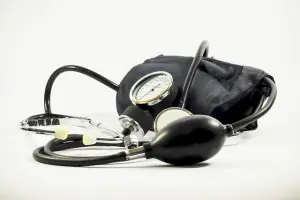
Massage for high blood pressure - what you need to know
High blood pressure occurs in 1 out of 3 adult Russians. Hypertension is considered one of the most common and dangerous diseases of the cardiovascular system. In addition, high blood pressure leads to serious consequences such as stroke, myocardial infarction, chronic heart failure, etc.
Properly performed massage for hypertension has an impressive therapeutic effect on the body. In this case, massage should only be performed by a professional. The master will bring high blood pressure numbers to normal levels. Before performing, consultation with a doctor is necessary.
How massage helps regulate high blood pressure
High blood pressure changes the natural tone of blood vessels. In most cases, the vessels of the brain are affected. A properly performed massage can cause a narrowing or dilation of blood vessels, which helps to lower or increase blood pressure (BP).
The work of massage is based on the influence of nerve endings located in every cell of our skin. Correct exposure distributes reflex impulses that can lower blood pressure.
One of the reasons for increased blood pressure is stress, overexertion, and fatigue. A soothing massage can reduce the excitability of the nervous system, which plays an important role in high blood pressure.
Different massage techniques, the strength of the impact and the duration of the techniques have different effects on the functional state of the whole body. Massage for hypertension eliminates the following symptoms: dizziness, headache, spots before the eyes. The proposed technique can be used for preventive purposes.
Massage technique for hypertension
The main massage area for hypertension is the scalp and collar area. Before performing the procedure, be sure to measure your blood pressure. For slightly elevated blood pressure, the session should not exceed 15 minutes.
Scalp massage
The patient needs to lie on his stomach with his head resting on his hands folded in front of him. The massage therapist performs the following techniques:
- Stroking - using the fingertips, a stroking movement is made from the crown to the occipital area. Afterwards, the movements are performed from the crown towards the temples and frontal area.
- Rubbing - using the fingertips, the movement is performed along the same trajectory. Initially, zigzag rubbing is performed, then circular rubbing, ending with circular beak-shaped rubbing.
Then the patient is asked to change the starting position: he is turned onto his back, with a bolster under his head. This position involves massaging the frontal part of the head. This is done as follows:
- Stroking - with the fingertips, straight stroking is performed from the center of the forehead towards the temples.
- Rubbing - zigzag rubbing is performed along a given trajectory with the fingertips, then circular and light pressure with the fingertips.
- Pinching with your fingertips from the center of the forehead along the hairline towards the temples.
- Stroking with fingertips along a given trajectory.
Massage of the scalp should be completed by alternating soft massaging of the temporal zones. Massaging is performed with the fingertips in a circular motion.
Neck massage
The patient must take a sitting position. Massage this area should be 2-3 times softer and more gentle than other areas of the body. The master performs techniques only from top to bottom.
- The procedure begins with stroking movements. In the first minutes the stroking is superficial, then deeper. Stroking is carried out along the following trajectory: from the ears - the back of the neck - the middle of the shoulder blades - up to the cervical lymph nodes. Hands should not be removed from the body.
- Alternate rubbing - one half of the chest is rubbed alternately along a trajectory from the shoulder girdle to the corners of the shoulder blades, then the second.
- Deep stroking along the same trajectory. In the future, it is recommended to perform it after each subsequent dose.
- Spiral rubbing from the shoulder girdle to the corners of the shoulder blades.
- Acceptance of sawing.
- Light soothing stroking.
Shoulder area massage
The patient is in a sitting position. The techniques are performed with both hands at the same time.
- The massage therapist begins with spiral rubbing of the shoulder joints along the shoulder girdles along the following trajectory: the back of the neck - up to the auricle - down to the mastoid process. Next, from this point, straight-line rubbing is performed along the shoulder girdle to the area of the shoulder joints.
- We move on to light sawing of the shoulder girdles.
- Kneading the shoulder girdle with a pincer-like movement.
Front neck massage
The patient is in a sitting position, the specialist stands behind.
- Gently stroking with palms along the following trajectory: chin - subclavian and axillary lymph nodes.
- Using your fingers, you perform a forceps-like kneading of the sternocleidomastoid muscle.
- Continuous vibration up and down the sternocleidomastoid muscle.
- Lightly stroking the neck (see exercise 1).
A specialist, systematically performing massage for hypertension, must monitor the patient’s condition, find out about his well-being before and after the session, adjusting his work to one degree or another. As for the patient, he should always report the slightest problems and ailments.
Since high blood pressure can have dangerous health consequences, a large number of studies have been conducted on the effects of massage and blood pressure. During the studies, no adverse effects on the body were identified. However, you should be careful and strictly monitor the patient's condition. A doctor's consultation will also be necessary.



